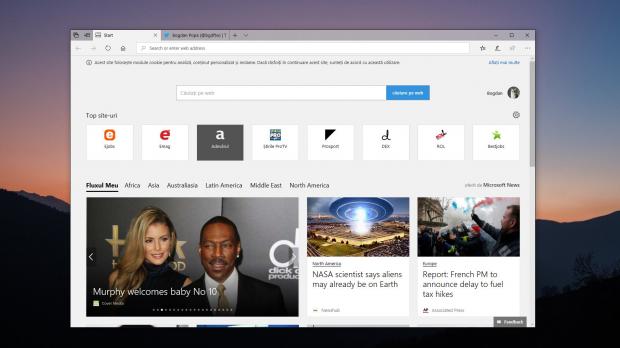It’s no longer a secret that Microsoft has a hard time building a successful browser, and after Internet Explorer, whose failure is already history, Microsoft Edge is very close to getting the boot as well.
Launched with much fanfare as the new default in Windows 10, Microsoft Edge evolved from a very promising browser to a complete letdown, partially because for some reason, Microsoft forgot about the original plans and changed them several times in the meantime.
Microsoft Edge only received refinements as part of new OS feature updates, so the browser got new features when Microsoft published new Windows 10 versions. At some point, it was speculated that the company was exploring ways to bring the browser to the Microsoft Store in an attempt to deliver updates more frequently, but it eventually dropped this idea.
At the same time, the software giant originally promised to make all Google Chrome extensions work on Microsoft Edge, though it was pretty clear this would’ve been quite a challenge given the two browsers used different engines.
However, Microsoft did manage to convince a handful of devs to bring their extensions to Edge, but the number of browser add-ons that are currently up for grabs doesn’t even compare with what Google Chrome users can install right now.
Needless to say, Microsoft Edge had the impossible mission of competing against Google Chrome, an already mature browser with a large user base that was getting updates regularly, had a ton of extensions, and was using an optimized engine that correctly rendered 99 percent of the websites.
And these are exactly the areas where Microsoft Edge failed. Not only that Edge doesn’t boast the same rich collection of extensions, but in terms of performance, it still leaves a lot to be desired.
I tried to switch to Microsoft Edge several times in the past and every time I gave up on it due to occasional crashes, slow loading times, and the lack of features. And yes, I also missed many of my extensions, so this mix of setbacks always made me return to Google Chrome.
As it turns out, Microsoft is now trying to do what was supposed to from the very beginning: build a browser based on Chromium.
A new Windows 10 browser to replace Edge is now being developed, and it would be more or less Microsoft’s very own Chrome version. Powered by the same Chromium engine like Chrome, the new Windows 10 browser is likely to see daylight in the upcoming 19H1 update for the operating system due in the spring. It may be released to insiders in the next few builds.
At this point, it’s not known whether Microsoft wants to stick with the Microsoft Edge name and the existing UI, but this is without a doubt a difficult decision. If Microsoft retains the current approach, the new browser is likely to feel more familiar for Windows 10 users, but on the other hand, it could reduce the impact a completely new browser would have.
At the same time, changing the name and the UI one more time means Microsoft publicly acknowledges that it failed once again. This isn’t such a terrible thing if Microsoft is actually learning from such mistakes, but this approach requires the company to reboot its browser efforts from scratch, and this involves everything from getting Windows 10 adopters used to it to marketing and rebranding on other platforms like Android and iOS.
Certainly, Microsoft has a lot of work to do on the browser front and the company doesn’t afford to just give up on it. Windows 10 needs a truly powerful browser, and it’s pretty clear that Microsoft Edge isn’t the right way to go. Maybe the third time’s a charm.

 14 DAY TRIAL //
14 DAY TRIAL // 

